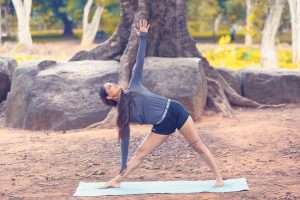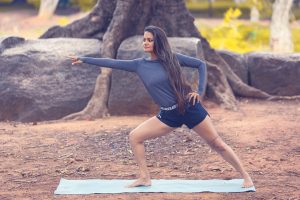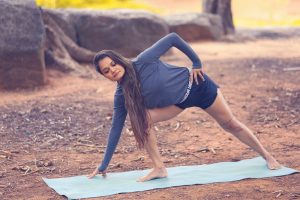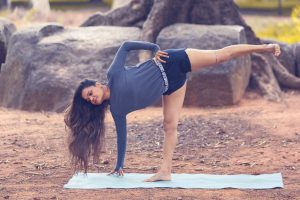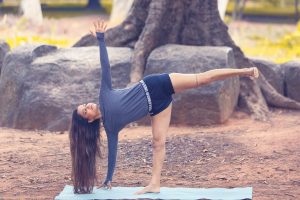The International Day of Yoga is now a part of our collective psyche. As I prepped for my session for Suta this past weekend, I thought about how this came to be – how this practice which is our parampara came to be celebrated all over the world.
Yoga has become omnipotent and so laying claim to it seems almost presumptuous. But we aren’t laying claim to this ancient practice based on hearsay, or because a few yoga texts are in Sanskrit. We lay claim to it because we have evidence of yoga existing in this region (present day India, Pakistan, Afghanistan) as far back as 2350-2000 BCE. The Pashupati Seal was found in present day Mohenjo Daro. Today it sits in the National Museum in Delhi.
Around 1500 BC we find a reference to yoga in the form of the Sanskrit root yuj in the Rig Veda. The shloka which uses the word describes Indra yoking his horses and drawing them together. The horses represent the rays of the sun, and when the rays of the sun are drawn back to the source, a dawn happens. This dawn symbolises the dawn of enlightenment and knowledge. The Bhagavad Gita is an important yogic text from this time, which gives definitions or descriptions of yoga, such as yogah karmasu kaushalam. This period is considered the pre-classical period of yoga history.
And after this there is a lull of about 500 years and then some time between 500-400 BC Patanjali’s Yoga Sutras are published – arguably the most recognised yoga text today. This text talks about the eight-limbed or ashtanga path of yoga and for practitioners today, drives home the point that yoga is not just asana. This period is also called the classical period of yoga history.
After this we have what is known as the Modern Age of yoga. T. Krishnamacharya is considered to be the Father of Modern Yoga, a befitting title as he is the teacher to stalwarts like BKS Iyengar, TKV Desikachar, Indra Devi, Pattabi Jois and AG Mohan. Other notable teachers of this time are:
-
- Swami Kuvalyananda – established Kaivalyadham in 1924.
- Swami Sivananda – established the Divine Life Society in 1936 and Sivananda Ashrams.
- Shri Aurobindo – established Auroville near Pondicherry in 1926.
- TKV Desikachar – established the Krishnamacharya Yoga Mandiram in Chennai.
- Maharishi Mahesh Yogi – founder of Transcendental Meditation
- BKS Iyengar – founder of the Iyengar style of yoga.
The Story of the International Day of Yoga
So when Modi ji addressed the UN in Dec 2014, he came with this context. And much in the ethos of yoga in his speech he spoke about three things:
- He emphasised collective action. Said developed countries must help the developing countries financially as well as technologically. This reflects the Gita’s teaching of yoga karmasu kaushalam which can be loosely translated as yoga is skill in action.
- Next he spoke about India’s responsibility – that India will also participate in sharing our technologies and capabilities with the SAARC countries. He cited examples of where India is already doing this.
- Finally he spoke about the importance of mindful development. He said that reckless consumption is not mandatory for development. This is where he brought yoga in and said that if we change our lifestyle and cultivate mindfulness and consciousness, we can deal with the crisis of climate change.
A year later, on June 21, 2015, we celebrated the first International Day of Yoga.
Yoga – An Intangible Cultural Heritage
In 2016 the Indian govt petitioned UNESCO to include yoga in the list of Intangible Cultural Heritage of Humanity. Intangible cultural heritage are practices, expression, knowledge or skill – folklore, customs, beliefs, traditions and even languages. This brought even more awareness to the place yoga holds in India’s culture and traditions.
The Relevance and Importance of Yoga for Us
During my MSc. a professor once spoke to us about the challenges humanity faces for survival. Historically our biggest threats have been natural calamities such as floods, draught, famine, pandemics (cholera, Bubonic Plague, Black Death etc.)
However, today humans are human beings’ biggest threat. We lack of empathy & sympathy. We criticise too much, accept too little. There is too much conflict, too little tolerance. Our collective mental health is at an all time low.
A resilient person is a person who has a strong mind and a strong body. Through the practice of yoga we can become more resilient. Yoga is a holistic solution to the issues and at the risk of sounding fanatical, I’d even say that yoga is important for us to survive as a species.
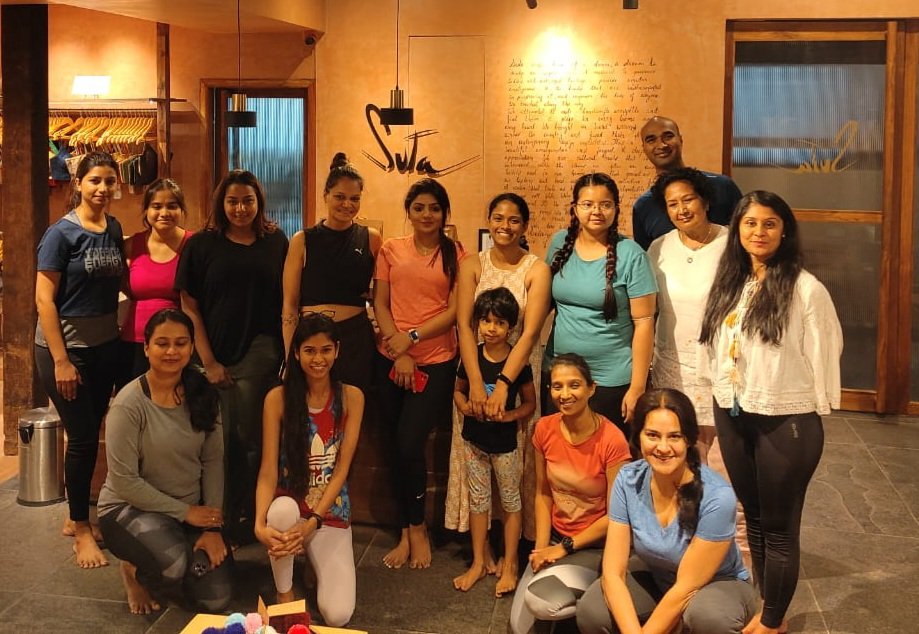
The amazing group who came from all corners of Bangalore to celebrate Yoga Day with us.
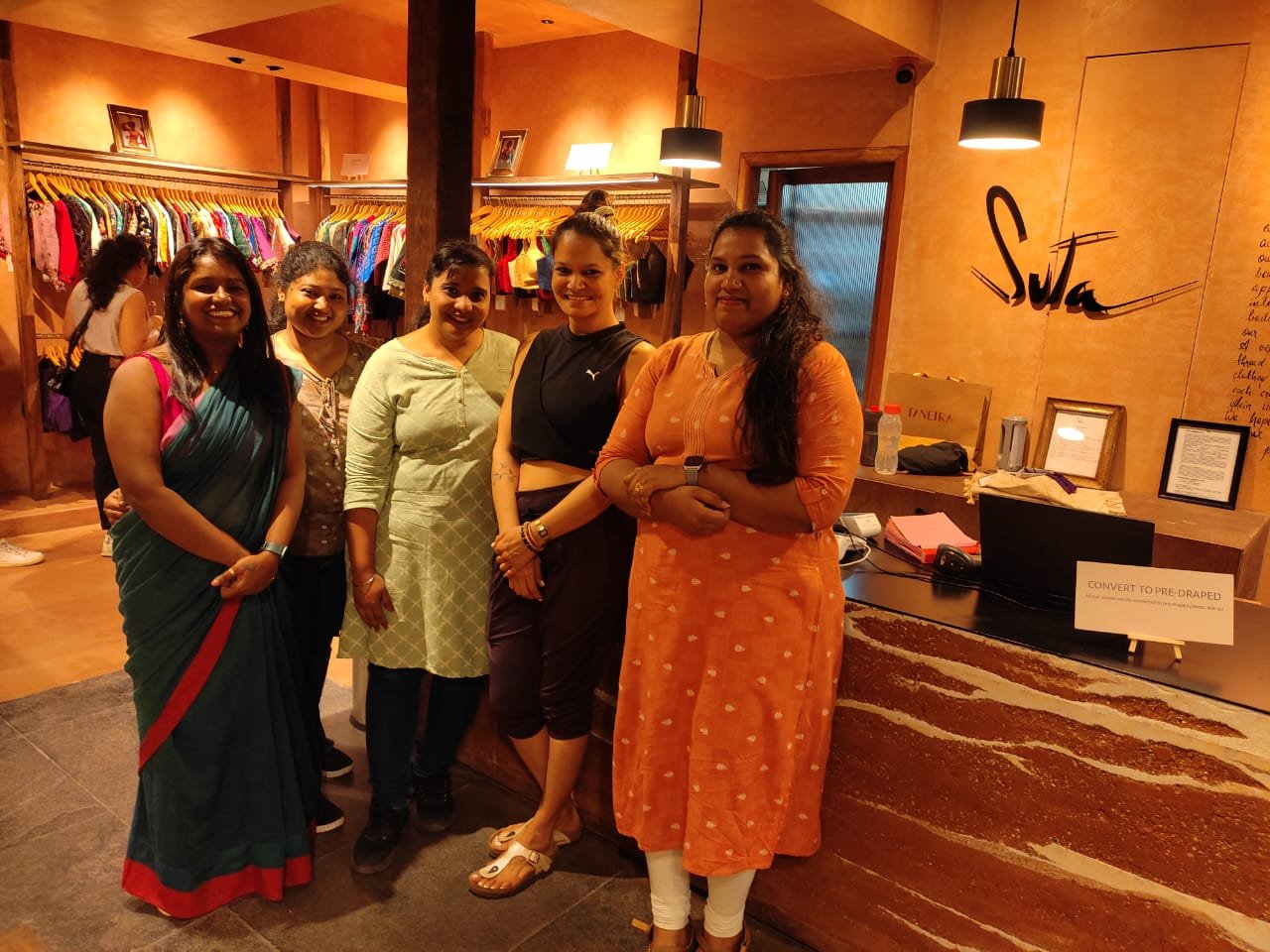
The Suta crew – who made the event seamless and fun.
